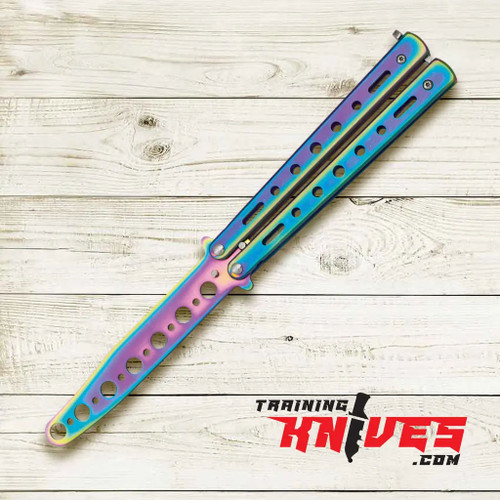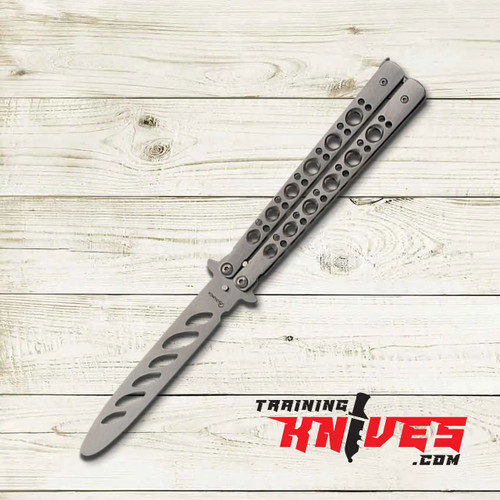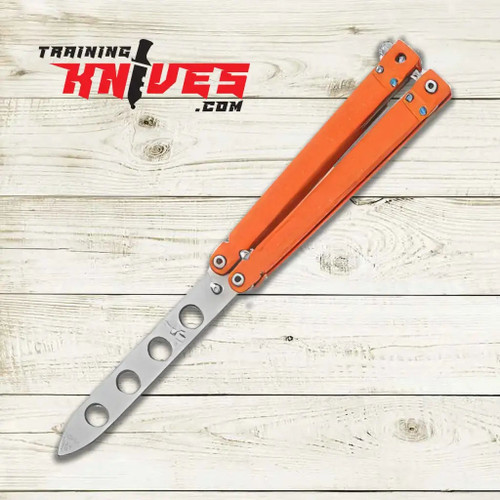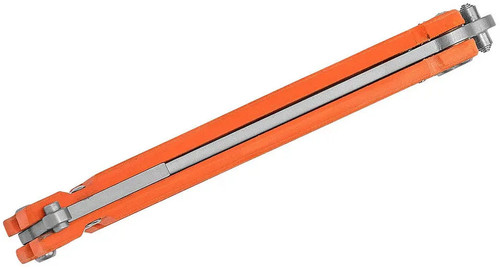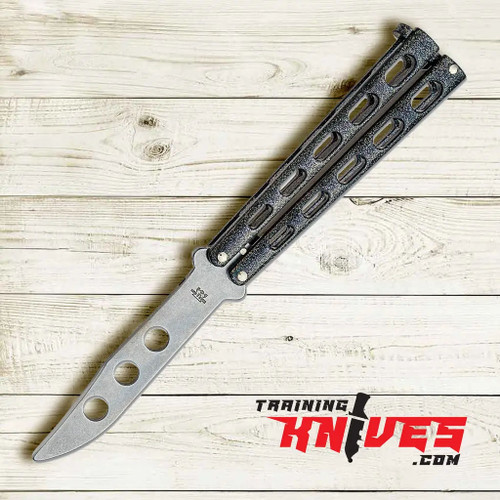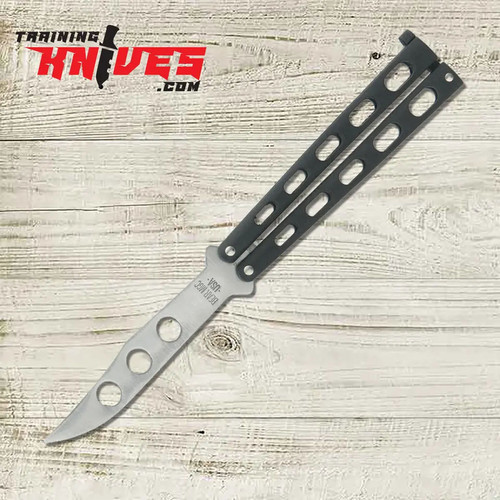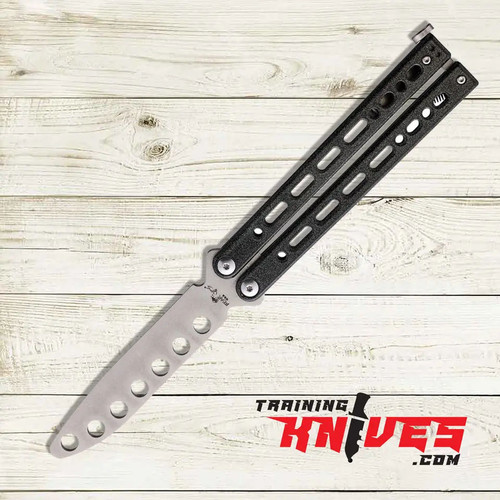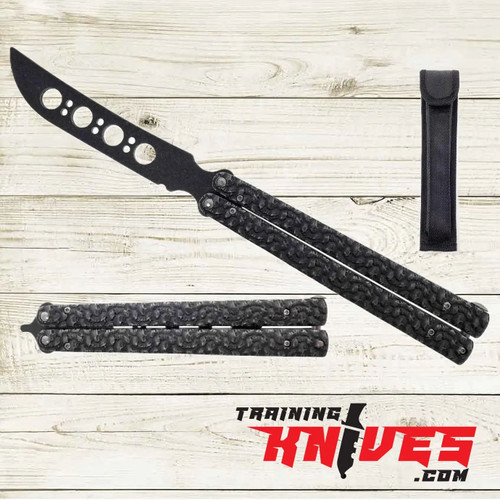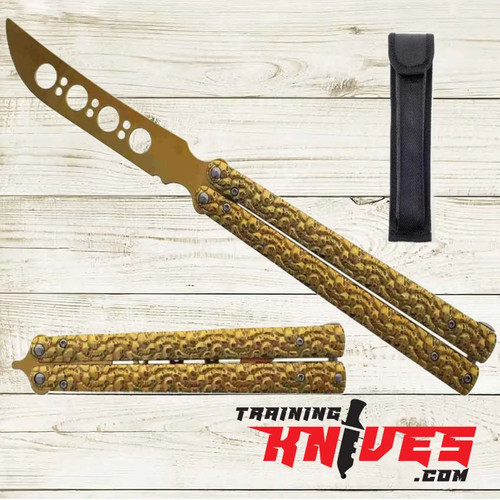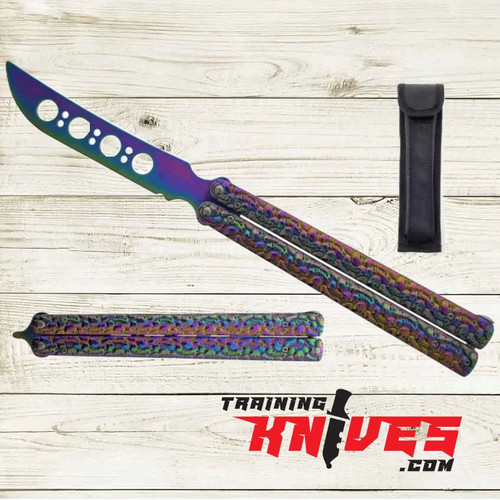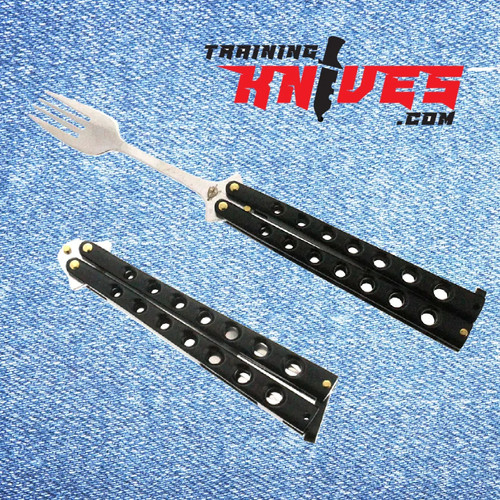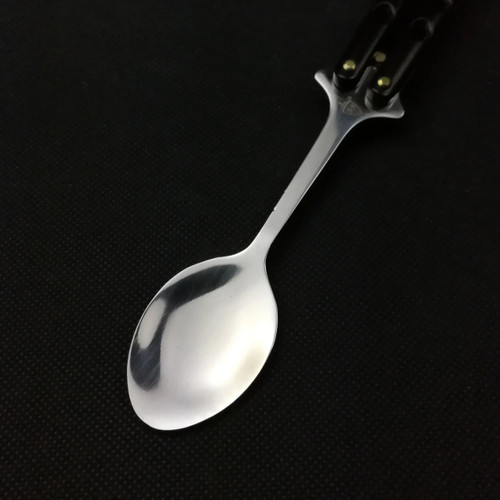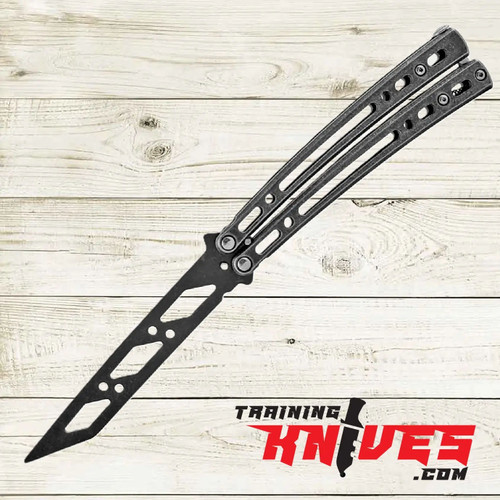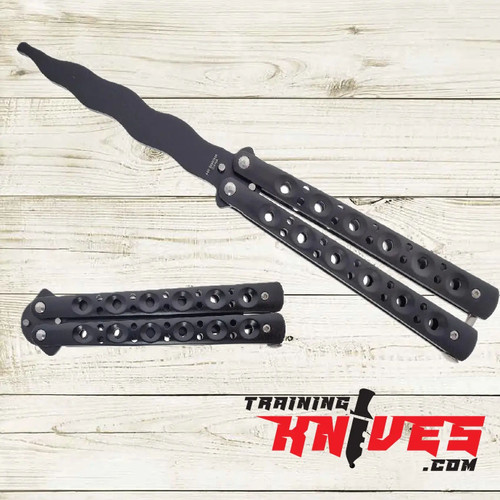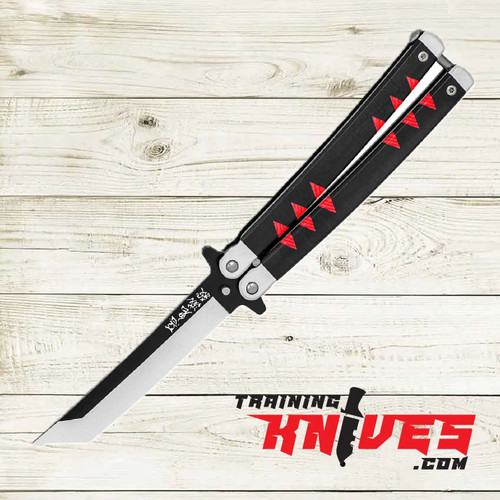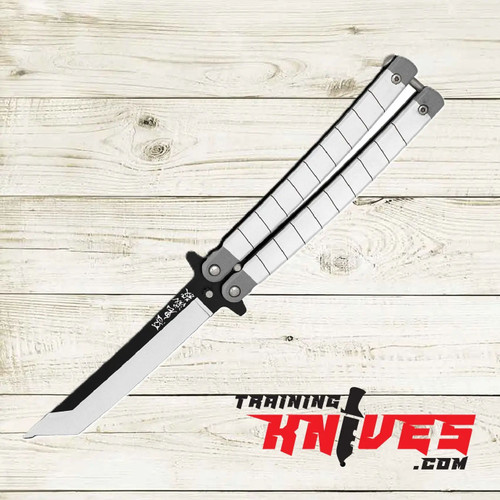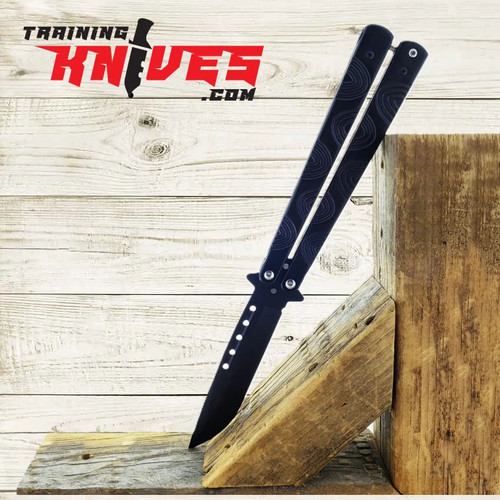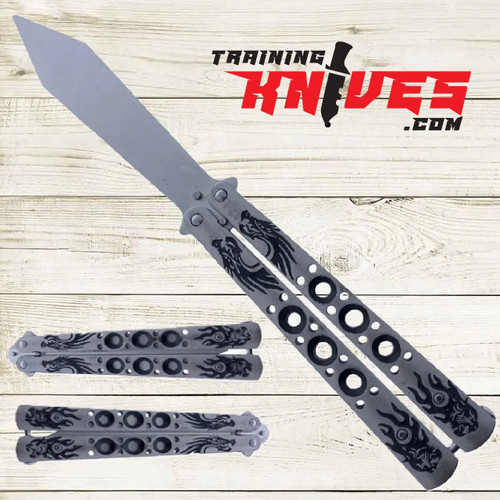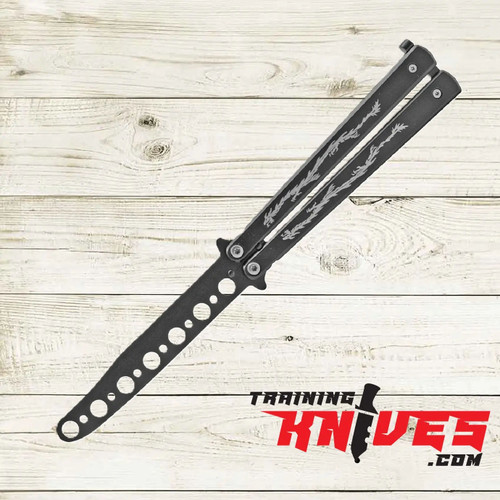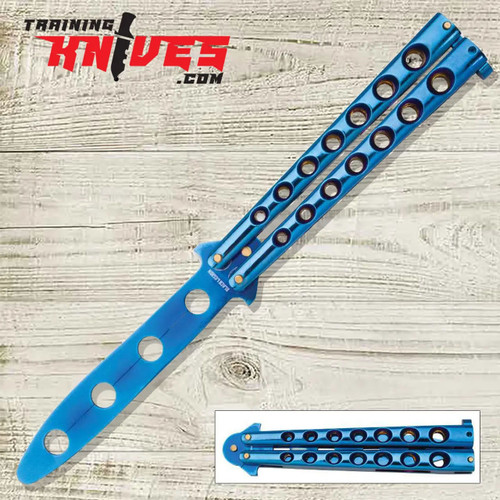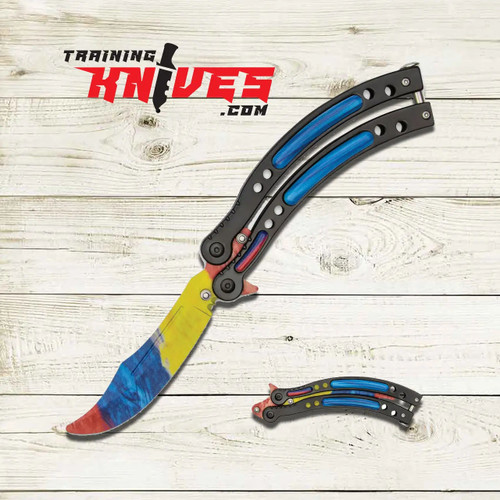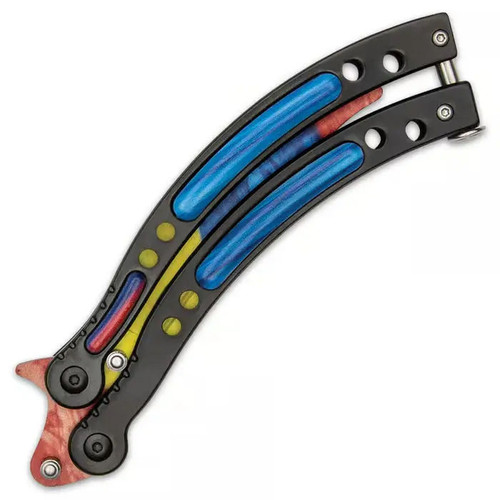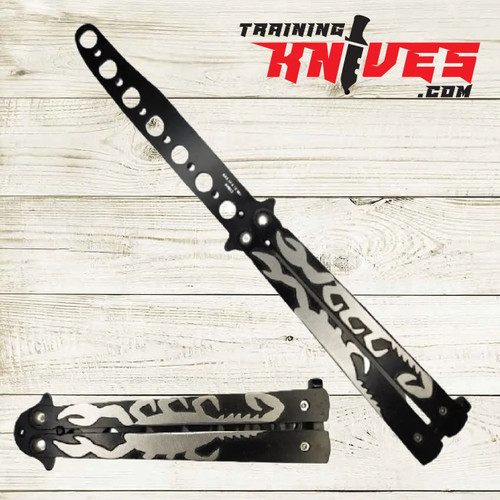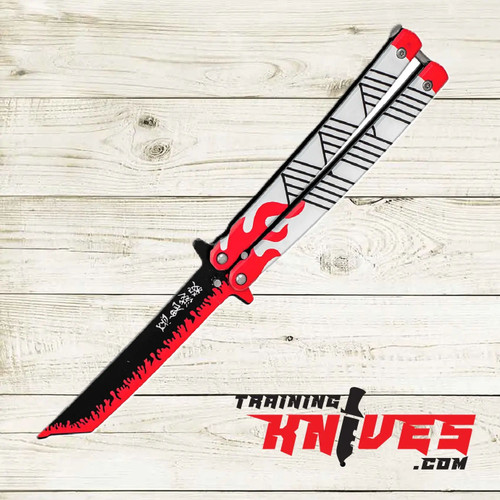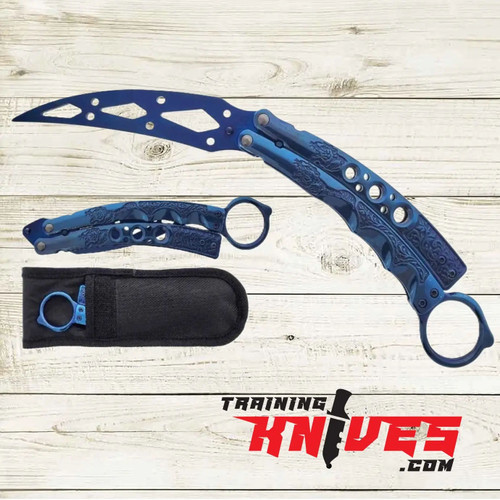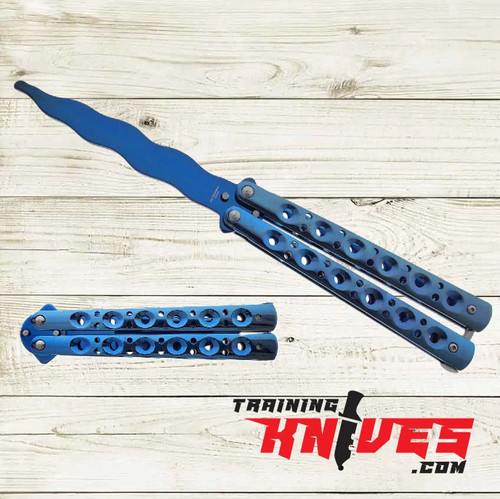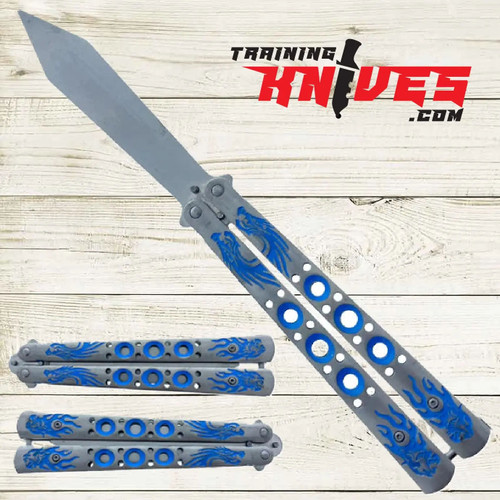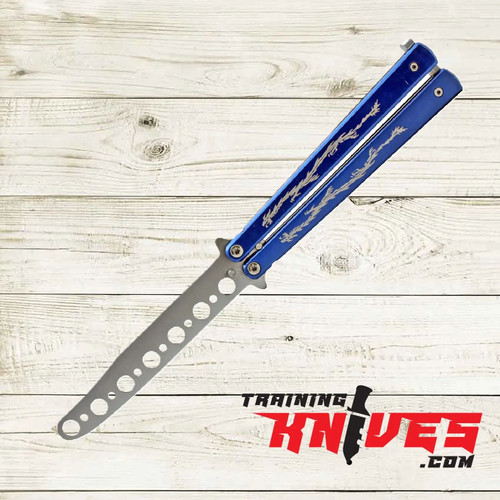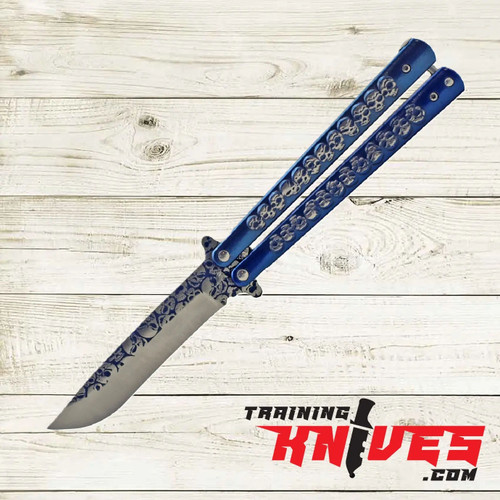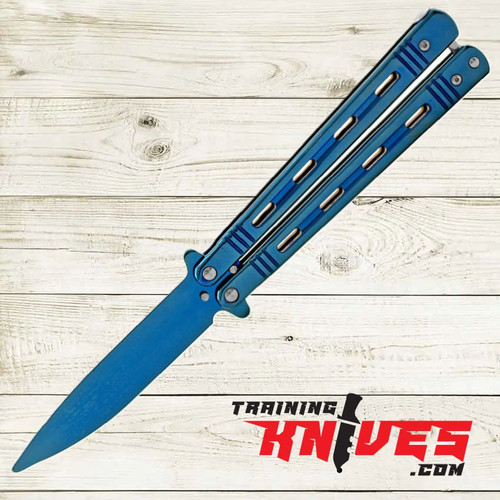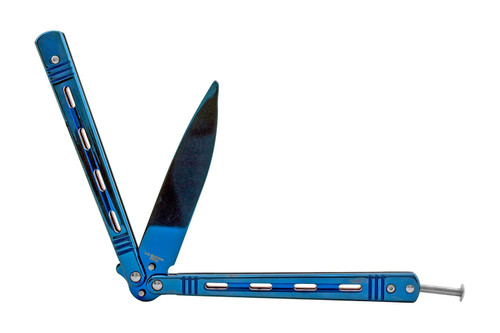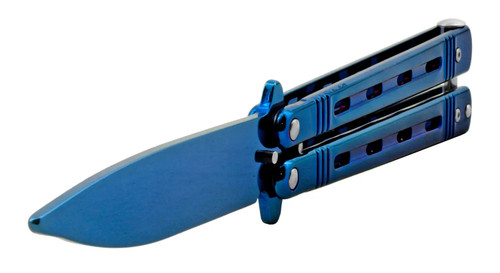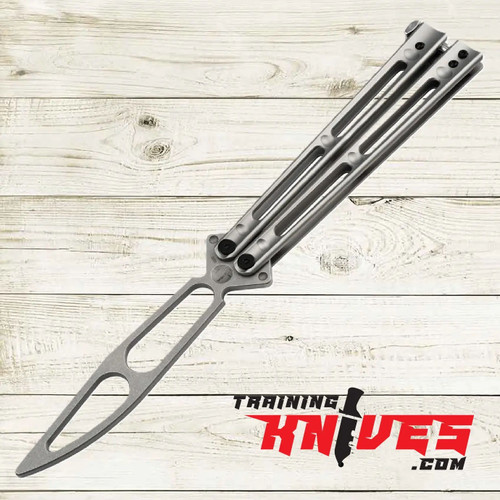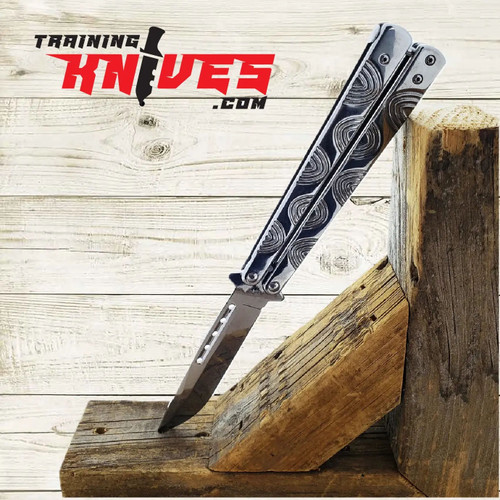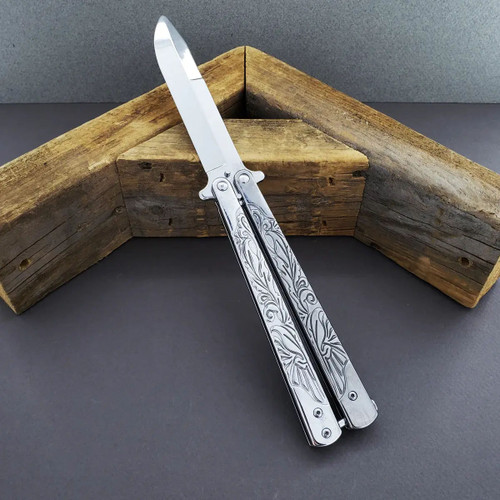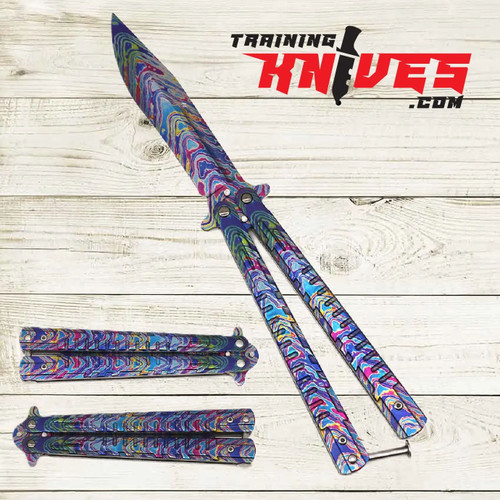Balisongs/Butterfly
Balisong Trainer Knives
Balisong and butterfly training knives hold significant importance for several compelling reasons:
-
Skill Development: They are essential tools for honing skills in knife manipulation and handling. Practicing with these training knives allows enthusiasts and professionals alike to develop dexterity, precision, and muscle memory crucial for safe and effective knife use.
-
Safety Training: Training knives provide a safe environment for learners to practice without the inherent risks associated with live blades. This is particularly valuable for beginners, allowing them to familiarize themselves with techniques and movements before advancing to real knives.
-
Artistic Expression: Balisong and butterfly knives are also appreciated for their aesthetic appeal and intricate designs. Many practitioners view them as works of art, combining functionality with artistic expression. Training versions allow enthusiasts to appreciate and practice with these designs without risking damage to expensive or collectible knives.
-
Cultural and Historical Significance: These knives have a rich cultural and historical background, particularly in Filipino martial arts and global knife culture. Training knives preserve and propagate these traditions by enabling practitioners to learn and pass down techniques and cultural knowledge safely.
-
Competitive Sports: In competitive knife sports and martial arts tournaments, such as balisong flipping competitions, training knives are indispensable. They allow participants to compete safely and showcase their skills without compromising safety standards.
-
Education and Awareness: Training knives play a crucial role in educational settings, where they are used to teach knife safety and responsible handling. They help promote awareness about knife-related skills and safety practices among enthusiasts, professionals, and the general public.
In conclusion, Balisong and butterfly training knives are not just tools; they are integral to skill development, safety training, artistic expression, cultural heritage, competitive sports, and education. Their importance extends beyond mere practice tools, impacting various aspects of knife culture and community worldwide.






















